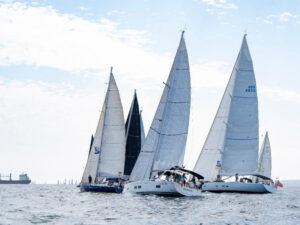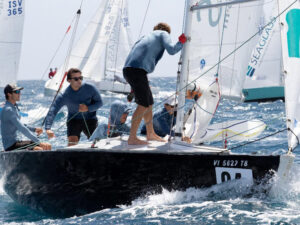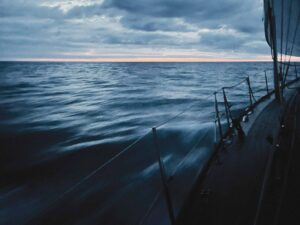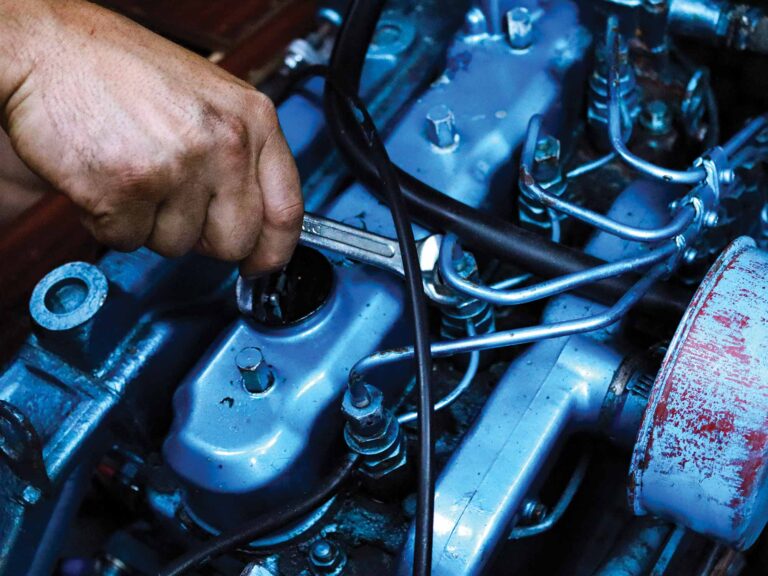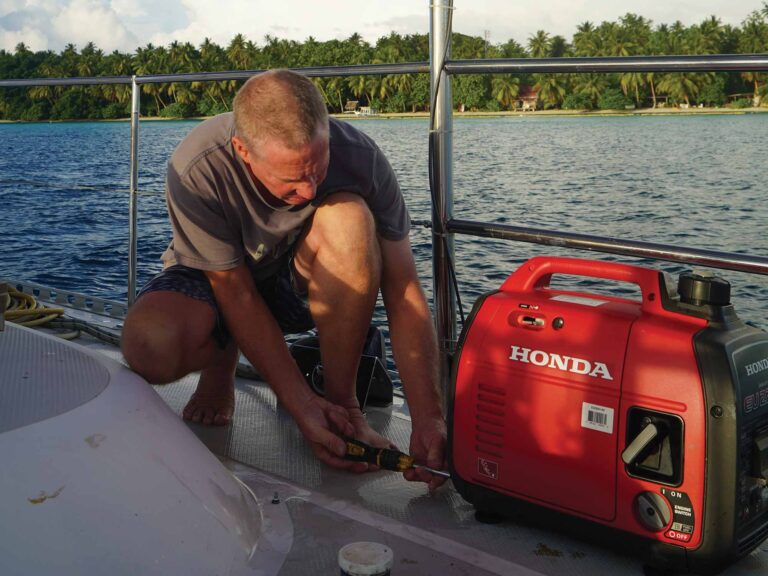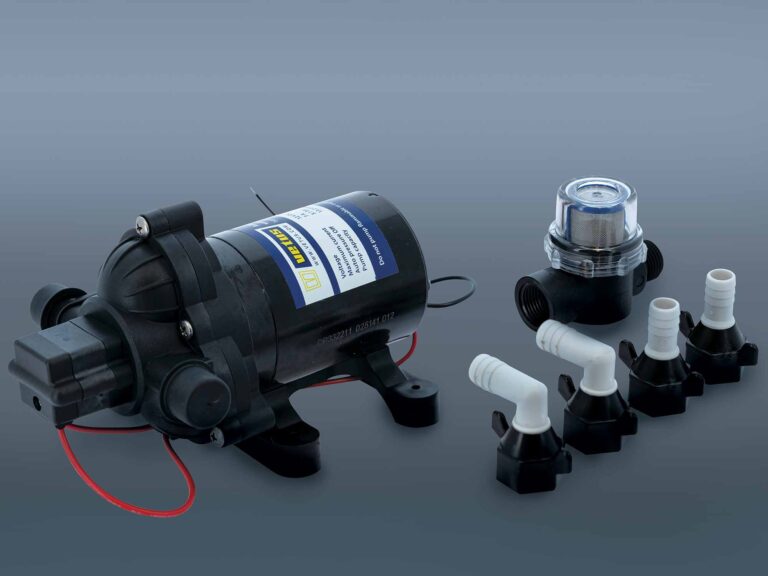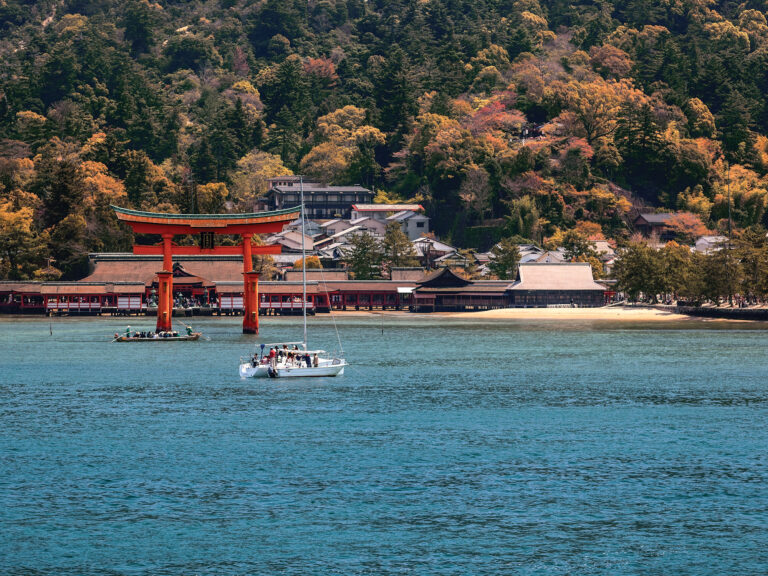You can’t take it anymore: Your 1990s vintage cruising sailboat didn’t come equipped with a factory-installed air-conditioning system or an alternating-current generator to power it and the other AC appliances you’ve brought aboard. Since you’ve owned the boat, though, you’ve turned into a real believer in global warming as you try to sleep through sweaty nights on board, and finally you’re ready to pull out your wallet and do something about it.
So, where do you begin? The first step is to analyze how much electrical power you are going to need. Since your boat had a basic shore-power system when you bought it, you already have some idea of your small-appliance usage, things such as hair dryers, the coffee maker and maybe even a small TV. But now you need to think in terms of running this same gear while at anchor. Additionally, if the standard-equipment shore-power option for your boat at the time of purchase was a 30-amp service, as is most often the case here in the United States, you might discover that it’s inadequate to run that new reverse-cycle air-conditioning system you’re dreaming about.
This is an area where, in my experience, a lot of boat owners go into denial as they discover that more power consumption adds considerable cost. Everything you’ve read about marine electrical systems so far tells you that air conditioning and refrigeration use a lot of power. But how much? The good news here is that these units have become more efficient in recent years and the power needs are not as great as they were when your boat was new. As an example, a modern 18,000 Btu reverse-cycle system from Dometic Corp. will need about 15 amps of AC power to get the job done. A 10,000 Btu unit is going to draw around 8 to 10 amps, depending on your location and whether you are heating or cooling.

Analyze Your Needs
The first step is to do an honest load analysis to see how much electrical power you will need. This is typically measured in thousands of watts, or kilowatts. The operative phrase here is: Don’t cheat. If you want to luxuriate in air-conditioned comfort 24-7 while cruising, it’ll cost you. Unlike powerboats, most cruising sailboats come equipped with liquefied petroleum gas stoves and ovens, so one of the major power consumers (an electric galley) is not a concern here.
All said, you are probably going to be looking at generators in the 4 to 12 kW size range. The typical owner of a 40-something-foot sailboat who wants to power up a reverse-cycle air-conditioning system, small galley appliances, a refrigeration system using either AC or DC power, a water heater and a battery charger is going to want an 8 kW generator. Larger boats that might end up having a clothes washer and dryer, larger reverse-cycle heating and cooling unit and water heater can easily end up in that 12 kW output range. The American Boat and Yacht Council offers a free trial membership with access to the relevant electrical power standard (E-11), including a complete load analysis worksheet for those who are so inclined and want a detailed account of their electrical needs. Simply go to abycinc.org to gain access via the consumer section of the site.

A quick way to determine your AC power needs is to look for the mandated label on each appliance. It is required to tell you either the operating voltage and amperage draw or the operating voltage and wattage.
Either way, a simple equation can be applied to get the info you need: Volts multiplied by amps equals watts; or watts divided by volts gives you an amperage value. Add the number of watts each device requires and you will get an idea of what size generator you’ll need. Remember that it takes 1,000 watts to make 1 kilowatt. Understand that this method will actually give you a result that does not take into account the fact that you might not be running all of your appliances simultaneously. The ABYC load analysis method found in the ABYC E-11 standard offers some diversity adjustments that are more conservative and reflective of the real world.

Although modern generators are not as sensitive to running with a light electrical load, most installers will tell you that running them at 70 to 80 percent of their maximum capacity is better for the engine. The risk here is carbon buildup in the engine’s combustion chambers if run with a light load for extended periods. So, this is a case where significant overkill is not such a good thing.
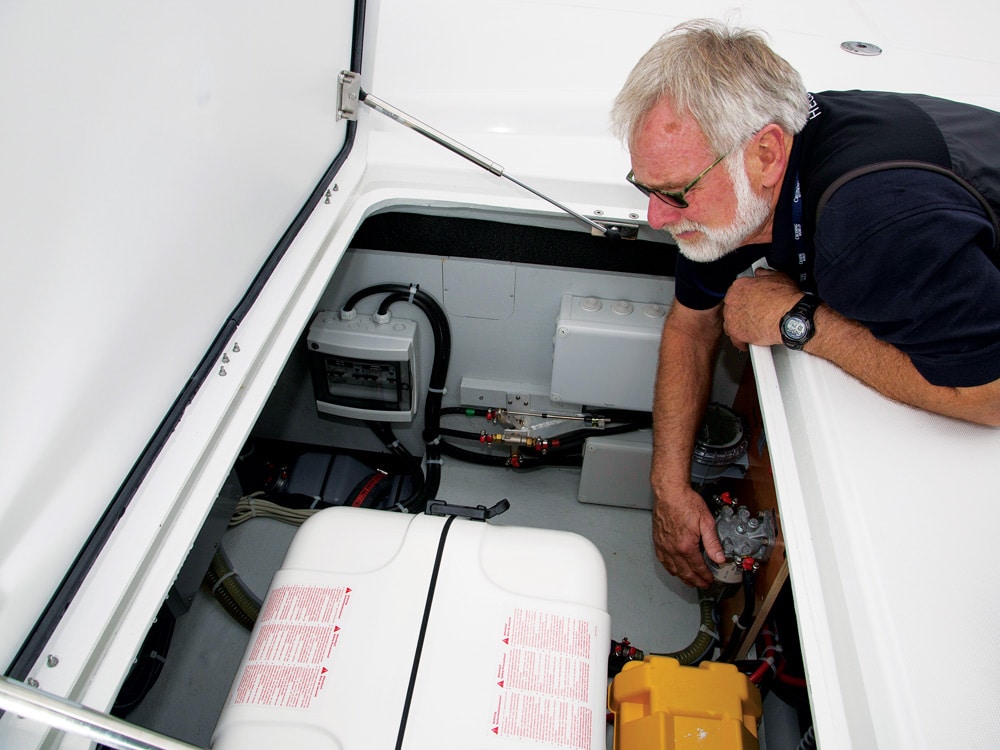
Practical Concerns
In addition to the electrical load you need to meet with your new generator, you should also be considering its weight and physical dimensions. Will the generator fit into the space you have available? The units I compared (see “Generators by the Numbers,” page 82) ranged in weight from a low of about 270 pounds for the 5 kW Fischer Panda to a high of just under 700 pounds for an 11.5 kW Kohler. This amount of weight dictates that when installing a generator on a monohull, you’re going to want to keep it on the centerline of the boat. Typically, this works out well because most sailboats built from the early ’90s on will have adequate space aft of the propulsion engine to fit in new generator. Multihulls offer more options on that front.
What might be a concern with the monohull is service access, not only for the generator itself, but for things like the propeller shaft stuffing box and shaft coupling. I’ve inspected many boats where the only way to access a leaking shaft seal was to lift the generator out of the way!
Wherever you end up installing your new generator, you need to be able to gain access to all the service points on the unit.
The physical dimensions of the generator could end up being a game changer too, so you’ll need to measure your boat’s available space carefully and compare that to the specifications for the units you are considering. You will also need to determine whether the unit will fit with a sound shield installed or not. Understand that some of the generators offer a sound shield as an option only. The presence of a sound shield, or your ability to insulate the space where you are going to have this generator mounted, could make a difference not only in size requirements but also noise issues while running.
As an example, comparing a Fischer Panda unit that comes with a standard sound shield, we get dimensions of 23 inches by 17 inches by 22 inches. A similarly rated Cummins Onan unit, which also comes with a standard sound shield, is 26 inches by 23 inches by 21 inches. A Westerbeke with a similar rating but with optional sound shield measures 36 inches by 23 inches by 25 inches. That 13-inch spread in length between the Fischer Panda and the Westerbeke could mean the difference between a doable install in the space available on your boat or not.
Finally, wherever you end up installing your new generator, you need to be able to gain access to all the service points on the unit. Can you get that oil filter off as installed? Can you access and change the water-pump impeller without needing an emergency chiropractic visit? These are questions that will need answers.
Power Perks
Several features related to newer generators are worth considering. One is whether the unit is equipped with digital controls that may also allow for self-diagnostics and integration to onboard networking that you or a former owner may have installed on the boat.
From a maintenance standpoint, you’ll also want to know whether the water-cooling system for the engine driving your generator is raw- or freshwater cooled. Raw water might save money initially, but will cost in the long run.
Buyers Beware
I can’t emphasize this enough: This sort of upgrade does not qualify as a do-it-yourself project unless you have considerable mechanical skills and experience, and labor will be a major addition to the overall cost of the installation.
Also, when you compare different units, study the supplied components carefully. Does the unit come with a remote display and control panel? What additional parts will you need? These will likely include an exhaust system, starter battery and cables, and raw-water supply hoses and a seacock. And don’t forget about wiring the generator into your existing, or possibly a replacement, AC distribution panel board. These items can add considerable cost above and beyond the generator prices shown in “Generators by the Numbers.”
If you are planning on cruising far afield with your new generator, you should also think about parts and service availability, not to mention its warranty.
Lastly, if you are planning on cruising far afield with your new generator, you should also think about parts and service availability, not to mention its warranty. As part of my research for this article, I looked at units from Cummins/Onan, Fischer Panda, Kohler, Northern Lights and Westerbeke. All five brands have extensive global dealer networks, so locating a service center that can help is just an internet search away. As for warranties, I’ve noted them in the “Generators by the Numbers” table. Keep in mind when reviewing this information that it is based on likely choices from the individual company’s offerings for a boat in the 35- to 45-foot size range. Also understand that the prices quoted are list price. Several of the dealers I spoke with suggested that discounts of $1,500 to $2,000 are quite common. That said, if you spot something you think is a deal, be certain of what you are actually getting, especially if it’s at a remarkably discounted price.
Ed Sherman is a frequent CW contributor, Boat of the Year judge and vice president of education for the American Boat and Yacht Council.
A green alternative
Considering the cost of installing a generator — estimated at $15,000 to $20,000, or possibly more depending on your boat and the power output selected — you might consider some alternatives.
How about essentially silent AC power via a direct-current-to-alternating-current inverter and adequate storage capacity that relies on the latest high-capacity battery technology?
Marine electrical systems have evolved considerably over the past decade or so, and I’m at the point now where I question the need for an onboard AC generator for most cruisers, though some might still benefit from installing a DC generator to supplement solar-, wind- or water-driven charging solutions.
The current density of high-end absorbed glass mat and lithium-ion batteries has improved by 20 to 30 percent due to their inherent capacity compared to older flooded-cell batteries. They can also be discharged to deeper levels without damage and recharged much more quickly due to high absorption rates. I’m of the opinion that it might be time to look at alternative power if you are willing to spend the kind of money we are talking about with an AC generator upgrade for an older boat.
As quiet as they might claim to be, that incessant drone of an AC diesel generator, not to mention the however faint odor of diesel exhaust fumes, is going to be a reality. It’ll have to run all night if you want that AC keeping you cool.
Instead, you could run the DC generator in the morning to replenish your batteries from an overnight discharge. Or, let your solar panels and wind generator do the job. I like the concept of not having to run an engine continuously to get my AC power.
Generators By The Numbers
| Brand | Kilowatt Rating | Sound Shield Equipped | Dimensions (LWH) | Freshwater Cooled | Warranty | Online Price |
|---|---|---|---|---|---|---|
| Cummins/Onan | 5 | Yes | 26”x20”x21” | Yes | 2 years unlimited; 3 years limited | $9,430 |
| 7.5 | Yes | 26”x23”x21” | Yes | 2 years unlimited; 3 years limited | $11,520 | |
| 11.5 | Yes | 41”x22”x23” | Yes | 2 years unlimited; 3 years limited | $15,052 | |
| Fischer Panda | 5 | Yes | 21.25”x17.5”x21.9” | Yes | 5 years electrical components; 3 years engine | $11,850 |
| 8 | Yes | 23”x17”x22” | Yes | 5 years electrical components; 3 years engine | $15,200 | |
| Kohler | 6 | Optional | 31”x21”x23”* | Yes | 5 years or 2,000 hours | $8,284** |
| 9 | Optional | 34”x21”x22”* | Yes | 5 years or 2,000 hours | $9,563** | |
| 11 | Optional | 21”x22”x38”* | Yes | 5 years or 2,000 hours | $10,743** | |
| Northern Lights | 5 | Optional | 32.5”x21.2”x21.8”* | Yes | 1 year parts and labor; 2nd year parts; 3rd, 4th, 5th year select major parts | $12,795*** |
| 9 | Optional | 39.3”x25.7”x25.3”* | Yes | 1 year parts and labor; 2nd year parts; 3rd, 4th, 5th year select major parts | $16,595*** | |
| 12 | Optional | 43.6”x27.3”x27.4”* | Yes | 1 year parts and labor; 2nd year parts; 3rd, 4th, 5th year select major parts | $18,695*** | |
| 5.5 | Optional | 33.3”x21.1”x22.3”* | Yes | 5 years limited | $11,800 | |
| Westerbeke | 8 | Optional | 36.1”x23.2”x25.3”* | Yes | 5 years limited | $14,194 |
| 10 | Optional | 36.1”x23.2”x25.3”* | Yes | 5 years limited | $16,772 |
*All dimensions are with sound shield; **price includes sound shield; ***price does not include optional sound shield


